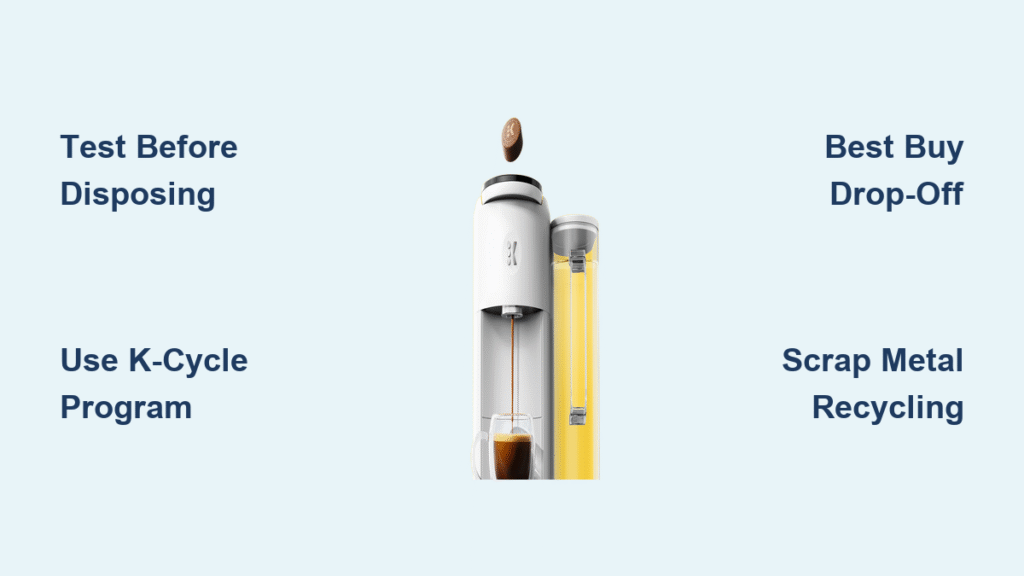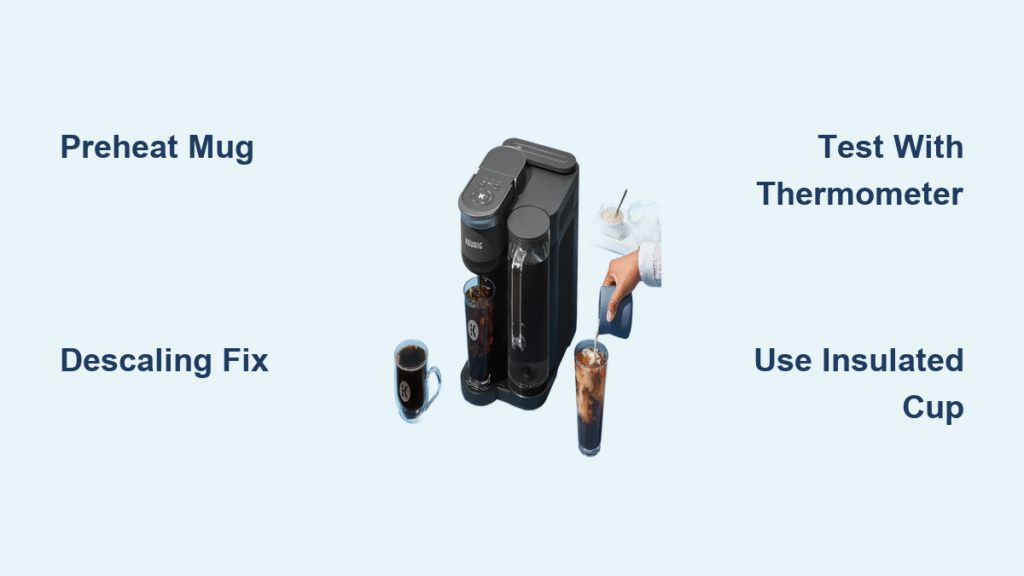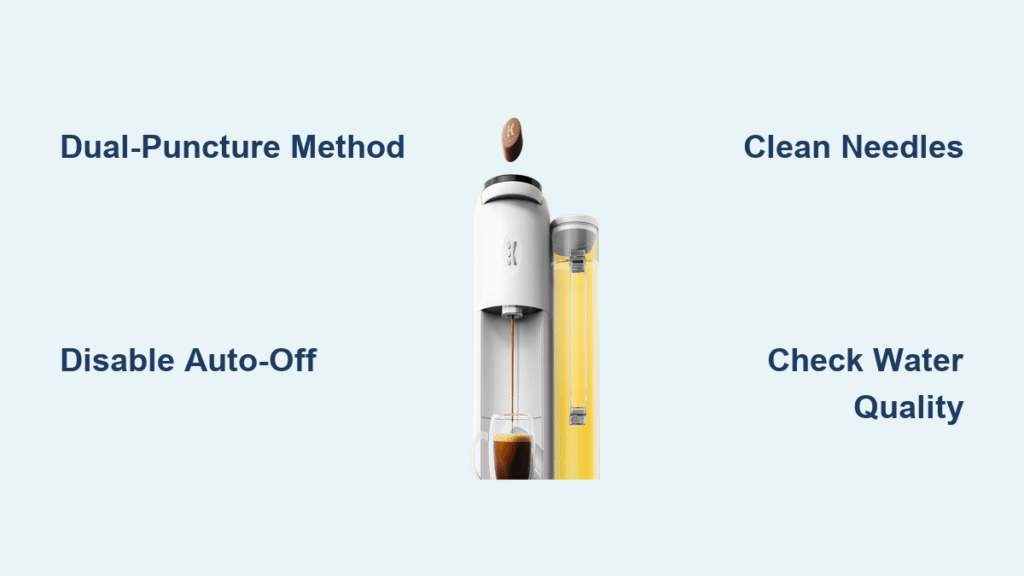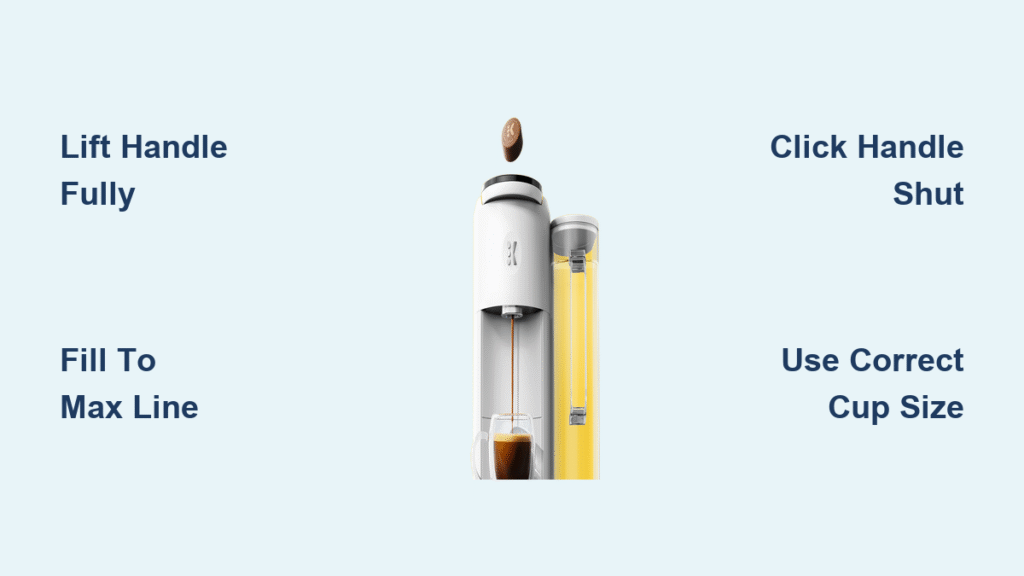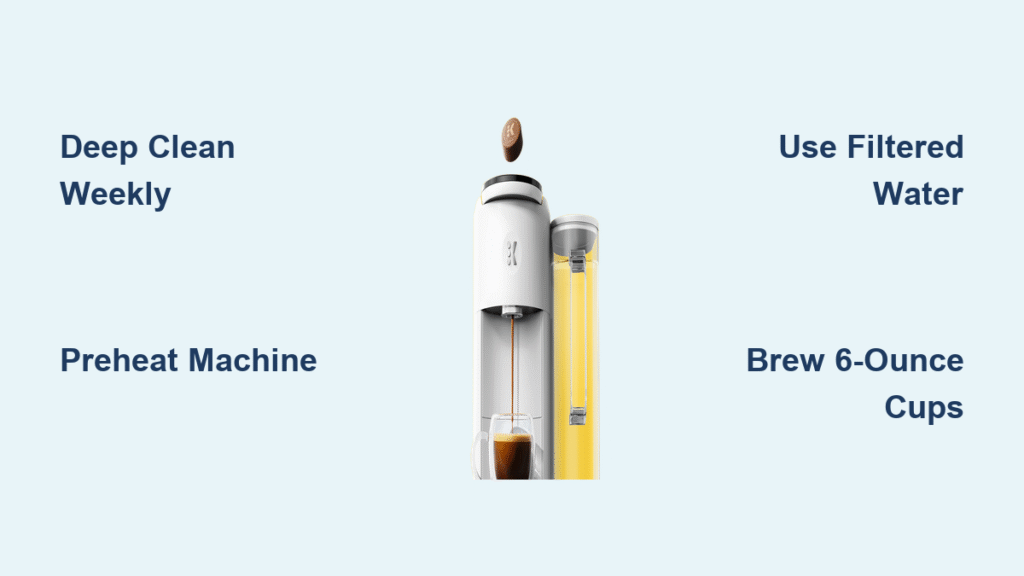That Keurig sitting idle on your counter isn’t just another appliance—it’s a 5.63-pound annual waste contributor per user in America’s 180-million-pound coffee pod crisis. When your machine stops brewing, tossing it in the trash sends plastic and metal components to landfills where they’ll outlive you by centuries. With only 6-9% of U.S. plastics actually recycled, your disposal choice directly impacts whether its materials get recovered or become part of the pod waste stream that could wrap around Earth ten times over. This guide reveals exactly how to dispose of a Keurig through verified recycling channels, donation opportunities, and money-saving options—all while preventing environmental harm.
Why Your Keurig Isn’t Trash (Yet)
Test Functionality Before Disposal
Don’t assume your Keurig is dead—many “broken” units just need descaling. Plug it into a different outlet, run a vinegar-water solution through the system, and check for clogs in the needle assembly. If it powers on, you’ve unlocked valuable disposal paths:
- Donate working units to Habitat for Humanity ReStores or women’s shelters (call ahead for acceptance)
- Sell functional machines on Facebook Marketplace for $20-$50—specify “tested working” in listings
- Gift to college students through campus groups like Student Government Associations
- List on Freecycle with “Free Working Keurig” in the subject line for same-day pickup
Non-functional machines still hold value. Dismantle them for scrap metal yards (copper wiring fetches $3-$5/lb) or donate to repair shops like iFixit affiliates who harvest parts for community fix-it clinics.
The Environmental Cost of Careless Disposal
Every Keurig user generates enough pod waste annually to fill a 5-gallon bucket. Nationally, discarded pods create landfills stretching 10 times around Earth’s circumference. When you improperly dispose of your brewer, you add to the 91% of plastics that never get recycled—instead breaking into microplastics that contaminate soil and water for 500+ years. Choosing responsible disposal recovers metals and plastics that reduce mining demands by 30% for future products.
How Keurig’s K-Cycle Program Actually Recycles Your Old Brewer

Claim Your Free Machine Take-Back
Keurig’s 2023 K-Cycle® program processed 284,396 pounds of polypropylene plastic from brewers like yours—diverting it from landfills through a simple process. Visit Keurig.com/K-Cycle, enter your zip code, and select “Recycle My Brewer.” You’ll receive a prepaid shipping label via email within 24 hours. Pack your cleaned Keurig (remove water reservoir and drip tray first) and drop it at any UPS or USPS location. Critical note: This program accepts ALL Keurig models—even non-Keurig-branded brewers using K-Cups.
Pod Recycling That Works in Practice
For K-Cup disposal, order K-Cycle® bags ($15.99 includes shipping label) that hold 96 pods. Peel foil while warm (easiest separation), empty grounds into compost, stack cleaned pods, and seal the bag. Drop at mailbox or UPS store—no extra postage needed. Offices use small boxes (175 pods) while hotels deploy large boxes (400 pods). Last year, this system composted 749,571 pounds of coffee grounds and repurposed 68,343 pounds for energy recovery.
Best Buy Drop-Off vs. LoadUp Pickup: Which Saves You Time?
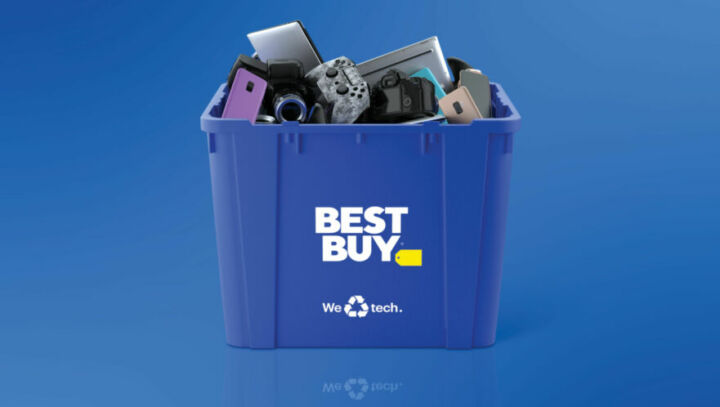
Free In-Store Recycling at Best Buy
Skip the shipping hassle with Best Buy’s free drop-off service. Walk into any store with your unplugged Keurig (no box needed) during business hours. Staff direct you to the small appliance recycling bin near customer service. They accept all models regardless of condition—no proof of purchase required. Pro tip: Wipe down the exterior and remove water reservoirs to prevent mold complaints from staff. This method works in 99% of U.S. counties within 15 miles of a store.
LoadUp’s Home Pickup for Maximum Convenience
When hauling your Keurig yourself isn’t feasible, LoadUp’s insured pickup ($80-$120) delivers hands-off recycling. Book online at LoadUp.com/Keurig-Disposal with exact pricing based on your zip code. Haulers arrive in eco-friendly trucks, take your machine from garage or kitchen, and provide recycling certificates. With 5,170+ verified reviews, they’re 25% cheaper than 1-800-GOT-JUNK while guaranteeing landfill diversion. Ideal for: Apartment dwellers without cars or those disposing of multiple appliances.
Step-by-Step Keurig Disassembly for Scrap Value
Separate Components Before Drop-Off
Maximize recycling efficiency by breaking down your Keurig 15 minutes before disposal:
- Remove glass carafe → Place in bottle recycling (curbside or Recycle Technologies)
- Extract metal parts → Cut copper wiring from base; aluminum housing yields $2-$4/lb at scrap yards
- Isolate plastic housing → Keurig’s #5 polypropylene accepts at most e-waste facilities
- Discard electronics board → Must go to certified e-waste handlers (never curbside)
Warning: Never dismantle while plugged in. Unplug 24 hours before starting to avoid electrical hazards.
Secure Transportation Checklist
Prevent damage during transit with these pro steps:
– Wrap power cord with rubber band (prevents tangles)
– Pack in original box with foam inserts or use newspaper padding
– Label “E-WASTE – RECYCLE ONLY” on exterior if mailing
– For LoadUp pickups, place machine near garage door for easy access
Avoid These Illegal Disposal Mistakes
NYC-Style Fines You Can’t Afford
New York City fines residents up to $100 for placing Keurigs in regular trash—part of 25 states with e-waste disposal bans. Even in unregulated areas, landfilling your brewer violates federal EPA guidelines. Critical compliance steps:
– Never place in curbside trash or recycling bins
– Keep disposal receipts for 3 years (tax deduction proof for donations)
– Document serial numbers when using manufacturer take-back
– Remove from curb within 24 hours of scheduled pickup
The Curbside Recycling Trap
Most municipalities reject Keurigs in blue bins because they contain mixed materials. When improperly recycled, these machines jam sorting machinery at facilities—causing shutdowns that cost $10,000+ per incident. Always verify acceptance through your city’s sanitation website using search terms like “[City] small appliance recycling.”
Cost Comparison: Free vs. Paid Disposal Options

| Disposal Method | Real Cost | Time Required | Best For |
|---|---|---|---|
| Best Buy Drop-Off | $0 | 20 minutes round-trip | Working/non-working units near stores |
| Keurig K-Cycle Mail | $15.99/bag | 15 minutes prep | Pod recycling + remote areas |
| LoadUp Pickup | $80-$120 | 0 minutes (home service) | Multiple appliances or mobility issues |
| Scrap Yard | $5-$15 (for metal) | 45 minutes | Dismantled machines with copper wiring |
Prevent Future Waste: Your Sustainable Coffee Shift
Switch to reusable K-cups immediately after disposal to eliminate your 5.63 pounds of annual waste. Brands like Cambio Roasters offer infinitely recyclable aluminum pods compatible with all Keurig models. For maximum impact, join Keurig’s Grounds to Grow On program if your office uses 50+ pods daily—they recycle commercial volumes at no cost.
Take action today: First, test your Keurig with a vinegar descaling cycle—you might revive it. If truly dead, choose Best Buy drop-off for free instant recycling or LoadUp for home pickup. Never trash your machine—this single choice prevents 5.63 pounds of waste and recovers metals that reduce mining by 30%. By properly disposing of your Keurig through these verified channels, you directly combat the 180-million-pound pod waste crisis while keeping recoverable resources in the circular economy. Your next brew starts with responsible disposal—act now before that silent machine becomes another landfill statistic.

